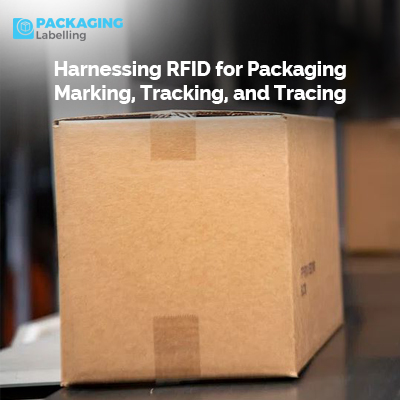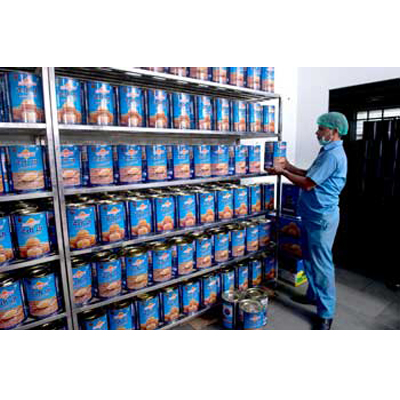Harnessing RFID for Packaging Marking, Tracking, and Tracing

In today's fast-paced business environment, efficient packaging marking, tracking, and tracing are essential for companies looking to streamline their operations and provide value-added services to their customers. This is where the power of RFID (Radio Frequency Identification) technology comes into play. RFID has revolutionized the way businesses manage their supply chains by enabling real-time visibility and seamless monitoring of products from manufacturing to the final destination.
With RFID technology, companies can easily label and mark their packaging, giving each item a unique identity that can be tracked throughout the entire supply chain. By utilizing RFID tags, businesses can accurately trace the movement of goods, monitor inventory levels, prevent counterfeiting, and enhance security measures.
In this article, we will delve into the benefits and applications of harnessing RFID for packaging marking, tracking, and tracing. We will explore how this technology can optimize the supply chain, improve operational efficiency, and provide insights into consumer behavior. Stay tuned as we unlock the potential of RFID to revolutionize the packaging industry and drive business growth.
A) Advantages of using RFID for packaging marking, tracking, and tracing
RFID technology offers numerous advantages when it comes to packaging marking, tracking, and tracing. Firstly, it provides real-time visibility into the location and status of each package in the supply chain. This enables companies to have accurate and up-to-date information about their inventory, allowing them to make informed decisions regarding production, distribution, and customer service. Additionally, RFID tags are durable and can withstand harsh environmental conditions, ensuring that the packaging markings remain intact throughout the entire journey.
Another advantage of RFID is its ability to improve operational efficiency. With RFID, companies can automate the tracking and tracing processes, reducing the need for manual labor and minimizing human errors. This not only saves time and resources but also increases the overall productivity of the organization. Furthermore, RFID technology enables faster and more accurate inventory management, ensuring that the right products are available at the right time, thus reducing stockouts and improving customer satisfaction.
Moreover, RFID tags can be easily integrated into existing packaging materials, eliminating the need for additional labeling or marking processes. This not only simplifies the packaging process but also reduces costs associated with labeling materials and labor. Additionally, RFID tags can be read from a distance without the need for line-of-sight, allowing for quick and efficient scanning of multiple packages at once. This significantly speeds up the tracking and tracing process, leading to faster delivery times and improved customer service.
In summary, RFID technology offers several advantages for packaging marking, tracking, and tracing. It provides real-time visibility, improves operational efficiency, and reduces costs.
By harnessing RFID, companies can optimize their supply chains, enhance customer satisfaction, and gain a competitive edge in the market.
B) Types of RFID tags and their applications in packaging
RFID tags come in various forms and can be attached to packaging materials in different ways. Let's explore the different types of RFID tags and their applications in packaging.
1. Passive RFID tags
Passive RFID tags are the most common type of RFID tags used in packaging. These tags do not have an internal power source and rely on the energy emitted by RFID readers to power them. Passive RFID tags are cost-effective, smaller in size, and can be easily attached to packaging materials using adhesive or embedding methods.
Passive RFID tags are suitable for a wide range of packaging applications, including inventory management, asset tracking, and authentication. They are commonly used in industries such as retail, logistics, and healthcare, where accurate tracking and tracing of products are crucial.
2. Active RFID tags
Active RFID tags have their internal power source, usually in the form of a battery. These tags can broadcast signals independently and have a longer read range compared to passive RFID tags. Active RFID tags are larger in size and more expensive than passive ones.
Active RFID tags are commonly used in applications where real-time tracking and monitoring are required. In packaging, they are used for tracking high-value items, monitoring temperature-sensitive products, and ensuring the security of valuable assets.
3. Semi-passive RFID tags
Semi-passive RFID tags, also known as battery-assisted passive (BAP) tags, combine the features of passive and active RFID tags. These tags have an internal power source to support additional functionalities, such as temperature sensing or tamper detection. However, they still rely on external RFID readers to power the tag during communication.
Semi-passive RFID tags are suitable for applications that require additional sensing capabilities or an extended read range. In packaging, they are used for tracking perishable goods, monitoring environmental conditions, and ensuring the integrity of sensitive products.
4. Near Field Communication (NFC) tags
NFC tags are a type of RFID tag that operates on the same frequency as passive RFID tags but has a shorter read range. NFC tags are commonly used for contactless payment systems, access control, and product authentication. In packaging, NFC tags can be used for interactive marketing campaigns, providing customers with additional product information, or facilitating easy reordering.
These are the four main types of RFID tags used in packaging marking, tracking, and tracing. The choice of an RFID tag depends on the specific requirements of the application, including read range, power source, and additional functionalities.
C) RFID readers and their role in tracking and tracing packages
RFID readers play a crucial role in tracking and tracing packages equipped with RFID tags. These devices are responsible for communicating with the RFID tags, collecting data, and transmitting it to the backend systems for further processing. Let's explore the different types of RFID readers and their role in the tracking and tracing process.
1. Fixed RFID readers
Fixed RFID readers are stationary devices that are typically installed at specific locations, such as entry points, warehouse gates, or production lines. These readers have a fixed read range and are used to capture data from RFID tags as they pass by or come into proximity.
Fixed RFID readers are commonly used for inventory management, asset tracking, and security purposes. They can be integrated with existing infrastructure, such as conveyors or forklifts, to automate the tracking and tracing process. Fixed readers can handle a large volume of RFID tags simultaneously, making them suitable for high-throughput applications.
2. Handheld RFID readers
Handheld RFID readers, also known as mobile or portable readers, are lightweight and portable devices that can be carried by personnel. These readers have a shorter read range compared to fixed readers and are used for on-the-go scanning of RFID tags.
Handheld RFID readers are commonly used in applications that require flexibility and mobility, such as inventory audits, field inspections, or point-of-sale operations. They enable users to capture data from RFID tags in real-time, providing immediate visibility into the location and status of packages.
3. Integrated RFID readers
Integrated RFID readers are devices that combine the functionalities of fixed and handheld readers. These readers are often built into other devices, such as mobile computers, tablets, or smartphones. Integrated readers leverage the processing power and connectivity of the host device to capture, process, and transmit RFID data.
Integrated RFID readers are suitable for applications that require both mobility and seamless integration with existing systems. They enable users to perform RFID scanning and data collection using a single device, eliminating the need for separate readers and reducing equipment costs.
RFID readers are essential components of the tracking and tracing process. They enable the collection of data from RFID tags, provide real-time visibility into the location and status of packages, and facilitate efficient inventory management.
D) How does RFID improve supply chain visibility and efficiency?
RFID technology has the power to revolutionize supply chain visibility and improve operational efficiency. Let's explore how RFID achieves these benefits and enhances the overall efficiency of the supply chain.
Real-time visibility
One of the key advantages of RFID technology is its ability to provide real-time visibility into the location and status of packages throughout the supply chain. RFID tags attached to packaging materials can be read by RFID readers at various checkpoints, enabling companies to have accurate and up-to-date information about their inventory.
Real-time visibility allows companies to track the movement of packages, identify potential bottlenecks, and make informed decisions regarding production, distribution, and customer service. It enables proactive management of the supply chain, ensuring that the right products are available at the right time, and reducing the risk of stockouts or excess inventory.
Efficient inventory management
RFID technology enables faster and more accurate inventory management compared to traditional methods. By automating the tracking and tracing processes, RFID eliminates the need for manual labor and minimizes human errors. This not only saves time and resources but also increases the overall productivity of the organization.
RFID tags can be read from a distance without the need for line-of-sight, allowing for quick and efficient scanning of multiple packages at once. This significantly speeds up the inventory management process, reduces the time required for physical counts, and improves the accuracy of data collection. As a result, companies can optimize their inventory levels, reduce carrying costs, and improve overall operational efficiency.
Enhanced supply chain collaboration
RFID technology promotes collaboration and information sharing among supply chain partners. Real-time visibility provided by RFID enables seamless communication and coordination between manufacturers, suppliers, distributors, and retailers. This allows for better planning, synchronization, and execution of supply chain activities.
By sharing real-time data, supply chain partners can respond quickly to changes in demand, resolve issues promptly, and improve overall supply chain performance. RFID technology facilitates data integration and interoperability, enabling seamless information exchange and collaboration across different systems and stakeholders.
Improved customer service
RFID technology has a direct impact on customer service by improving order accuracy, reducing delivery times, and enhancing overall customer satisfaction. Real-time visibility provided by RFID enables companies to accurately track and trace packages, ensuring that the right products are delivered to the right customers at the right time.
RFID technology enables faster order processing, reduces order errors, and minimizes the risk of stockouts or delayed shipments. This leads to improve on-time delivery performance, higher customer satisfaction, and increased customer loyalty. By harnessing RFID, companies can provide a seamless and positive customer experience, gaining a competitive edge in the market.
RFID technology has the potential to transform supply chain visibility and enhance operational efficiency. By providing real-time visibility, enabling efficient inventory management, promoting supply chain collaboration, and improving customer service, RFID can optimize the supply chain and drive business growth.
E) Challenges and considerations when implementing RFID in packaging
While RFID technology offers numerous benefits for packaging marking, tracking, and tracing, there are also challenges and considerations that companies need to take into account. Let's explore some of the common challenges and considerations when implementing RFID in packaging.
Cost
One of the main challenges of implementing RFID technology is the cost associated with tags, readers, and infrastructure. RFID tags can be more expensive compared to traditional barcodes or labels, especially for high-value or specialized applications. Additionally, the cost of RFID readers and infrastructure can be significant, especially for large-scale deployments.
Companies need to carefully evaluate the cost-benefit ratio of implementing RFID technology and assess the potential return on investment. It is essential to consider factors such as the scale of the operation, the complexity of the supply chain, and the potential cost savings or revenue generation opportunities that RFID can bring.
Integration with existing systems
Another consideration when implementing RFID technology is the integration with existing systems and processes. RFID technology requires compatibility with backend systems, such as inventory management, warehouse management, or enterprise resource planning (ERP) systems. Companies need to ensure that their existing systems can seamlessly integrate with RFID technology to enable data exchange and information sharing.
Integration with existing systems may require additional investments in software, hardware, or IT infrastructure. It is essential to assess the compatibility of existing systems with RFID technology and plan for the necessary integrations or upgrades to ensure a smooth implementation.
Data management and privacy
RFID technology generates a vast amount of data that needs effective management to ensure both operational efficiency and data privacy. The extensive data generated by RFID technology, including item locations, movements, and other relevant information, necessitates robust data management protocols. This includes secure storage, real-time processing, and data analytics to derive actionable insights. Moreover, ensuring data privacy is paramount, requiring encryption, access control measures, and compliance with data protection regulations such as GDPR or CCPA. Balancing the benefits of RFID data with privacy concerns is crucial for maintaining trust with consumers and stakeholders while leveraging the full potential of this technology in packaging and labeling.
Conclusion:
In conclusion, harnessing RFID technology for packaging marking, tracking, and tracing offers significant advantages and opportunities for businesses. The real-time visibility provided by RFID enhances supply chain efficiency, improves inventory management, and enables better collaboration among supply chain partners. However, implementing RFID in packaging comes with challenges such as cost considerations, integration with existing systems, and data management and privacy concerns. Overcoming these challenges requires careful planning, investment, and adherence to data protection regulations. Despite the challenges, the benefits of RFID in optimizing the supply chain, enhancing customer service, and driving business growth make it a valuable technology for the packaging industry.









